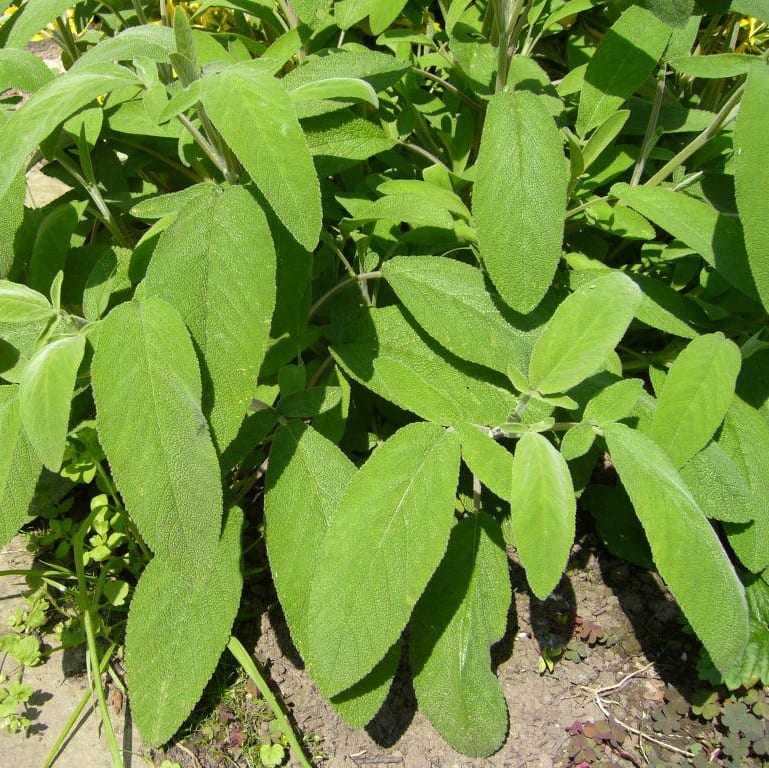| Maturity (days) | Annual |
|---|---|
| Plant height (cm) | 30-60 |
| Spreading (cm) | 30-60 |
| Formulation | Untreated |
Sage Broad Leaf
Sage Broad Leaf
3.79$
In stock
Sage Broad Leaf has been added to cart
Buy 3 and get a 10% discount
Traditional seasoning for poultry stuffing, meats, sausages, omelettes, cheeses and bean dishes. It has attractive, light blue flowers. A sage plant will deter many insect pests, but will attracts bees.
Cultivation mode
Plantation : Indoor: sow it in March. Cover the seedlings with a thin layer of potting soil or vermiculite (2 mm). Seeds require light to germinate and a temperature between 19 °C and 21 °C. Germination is slow between 14 to 20 days. Outdoor: transplant them after the last frosts. Avoid planting sage in the summer during hot weather, as it may be under great stress and not recover.
Soil : Indoor: A well-drained, porous seedling soil is ideal for preventing overwatering. Outdoor: well drained, even poor soils.Container: Planter soil and it is recommended that you cover the bottom of your container with a layer of gravel to prevent moisture from stagnating.
Spacing : a distance of 25 cm to 30 cm between each plant. For balcony or patio cultivation, transplant to a container at least 25 cm in diameter.
Cultural practices : she likes full sun, but tolerates partial shade. Sage tastes its best in the sun. Sage requires little care and maintenance when properly established. This plant tolerates the sun well, but will need to be watered in hot weather.When growing in containers, do not wait until the soil is completely dry before watering.
Harvest : Sage harvesting can take place throughout the season as needed, but it is during the vegetative period that the leaves and flowers will be the most tasteful. Sage is best picked in the morning during its vegetative period, from spring to late summer. Wait until the plant has a good clump before picking the first leaves.Dried sage leaves keep very well for many months.
| Latin name |
Salvia officinalis |
|---|---|
| Companion plants |
arugula,asparagus, Brussels sprout, cabbage, carrot, cauliflower, ground cherry, strawberry, rosemary, rue, tomato |
| Rival plants |
absinthe, ail, brocoli, concombre, pickling cucumber, oignon, poireau, sarriette |

